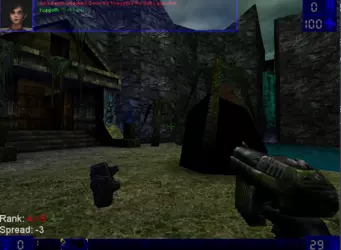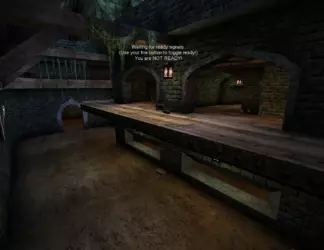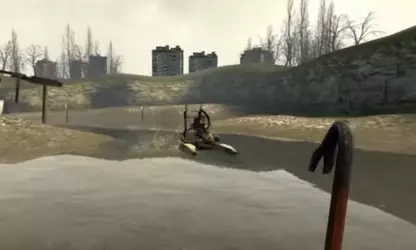Was there ever a time when new graphics tech came out that there wasn’t autistic screeching about it?
Given that there was autistic screeching about the Quake III engine not having a software renderer, I'm gonna say..."no."
no need to screech when "the new tech" was obviously better. you could show someone quake running on glide and the difference was obvious. same for TNL, bumbmaps asf.
You must have been in diapers in the 90s, because that's not how any of that went down. At every stage of advance, from Quake requiring a Pentium to display all of three monsters to Quake III not having a software renderer to Doom III running like absolute dog shit and having no outdoor areas, there was a cohort of gamers who autistically screeched about the new technology being unnecessary and developers just being lazy and/or greedy and possibly in cahoots with graphics accelerator companies. People bitched about moving from 2.5D to full 3D, from sprites to polygons, to requiring 3D accelerators, to requiring T&L, to requiring programmable pixel shaders, because at each jump, many of the new games ran like absolute dog shit and had gameplay regressions for the new tech to even be workable.
The autistic screeching I remember most vividly was Quake III not having a software renderer. That same year, Unreal Tournament's software renderer had colored lights, colored transparency, dynamic lights, texture filtering (albeit dithered), palettized textures, and procedural water effects, none of which even Quake II's software renderer had. The words "lazy" and "unoptimized" got thrown around a lot. This is what UT looked like on the Pentium III laptop I had at the time:


And there absolutely were gamers back then insisting they didn't see what the big deal about Quake III's lighting engine was compared to Unreal's, certainly nothing justify not having asoftware renderer.
and that "new tech" wasn't as expensive and then still had an obvious jump in performance ON TOP the improved fidelity. comparing RTX to the progress of the 90's till the 2010's is retarded as fuck.
No, new tech was insanely expensive back then. Cutting-edge games required cutting-edge CPUs in the 1990s. Quake (1996) barely playable on the fast Pentium from 1994, the P100. Quake II (1997) and Unreal (199

were slide shows, even if you had a Voodoo. It wasn't like today, when a good CPU lasts you 10 years and you just upgrade your GPU every 3 to 5 years. Back then, a high-end CPU got you maybe 2 years before games came out that it couldn't handle. So your choices were to either buy a new $2000 PC ($4K-$5K in today's money) every couple years or just accept there were going new games you couldn't play, and mostly picked up older games at Circuit City or Babbage's or wherever, but that was fine, because hey, Doom didn't run on the 286 you replaced with that P100, so you finally got to see what the fuss was about.
half life 2 did it and that game is 20 years old.
Half-Life 2 didn't have real-time dynamic reflections. It used static environment maps and couldn't reflect dynamic objects. Note how the boat, trees, and those wooden beams aren't reflected (not sure if the buildings should be reflected).

"Vampire objects" isn't an issue with optimization, artistry, or processing power. It is a fundamental limitation of environment mapping. All the rasterization-based methods have fundamental limitations:
| Method... | | | | |
| Can do... | Planar | Static maps | Dynamic maps | SSR | Raytracing |
| Off-screen |  |  |  |  |  |
| Dynamic objs/fx |  |  |  |  |  |
| High res |  |  |  |  |  |
| Curved surfaces |  |  |  |  |  |
| Irregular surfaces |  |  |  |  |  |
| Many surfaces |  |  |  |  |  |
| Diffuse |  |  |  |  |  |
| Multi/Recursive |  |  |  |  |  |
There are lots of things that can't be rasterized at all, like anything with multiple moving, reflective objects reflecting off each other. Think something like multiple cars racing next to office buildings.


